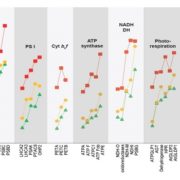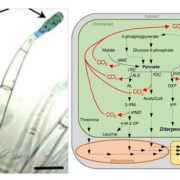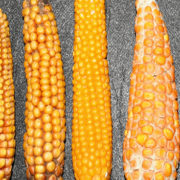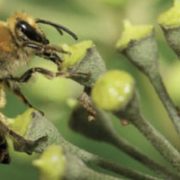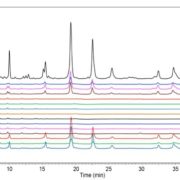Studies have found that key enzymes of plant oxalate metabolism affect corn nutrition quality
(From a press release written in Chinese – original here)
On September 10th , The Plant Cell published a research paper entitled Maize Oxalyl-CoA Decarboxylase1 Degrades Oxalate and Affects the Seed Metabolome and Nutritional Quality by the Wu Yongrui Research Group of the Institute of Plant and Plant Science and Excellence in Plant and Physiology, Chinese Academy of Sciences . The study cloned and functionally analyzed the key enzyme in the degradation pathway of corn oxalate, oxalyl-CoA decarboxylase, and revealed the molecular mechanism of oxalic acid metabolism involved in grain storage and nutrient quality formation.
Oxalic acid is the simplest dibasic acid and is very high in plants. Oxalic acid plays an active role in regulating metal stress, ion balance and insect defense. However, excessive oxalic acid will not only affect the development of plants themselves, but also affect the utilization of various mineral metal minerals including calcium. The excessive intake of oxalic acid from food will form calcium oxalate with calcium and induce the formation of kidney stones. It has been reported that there are oxalic acid synthesis and degradation pathways in plants. One of the degradation pathways is caused by four enzymes: oxaloyl-CoA synthetase, oxalyl-CoA decarboxylase, formyl-CoA hydrolase and formate dehydrogenation. The oxalyl-CoA synthetase catalyzes the formation of oxalyl-CoA by oxalic acid, followed by the formation of formyl-CoA by the action of decarboxylase by oxalyl-CoA. Oxalyl-CoA synthetase has been found in a variety of plants, but there is no report of oxalyl-CoA decarboxylase. In crop corn, the degradation pathway of oxalic acid is unknown, as is the role of oxalic acid and corn grain development and nutrient storage.
In this study, the Wu Yongrui research group cloned the Oxalyl-CoA Decarboxylase1 (OCD1) gene. After the mutation, the endosperm of the grain showed a starchy phenotype, while the storage material of the grain was synthesized and granulated. The weight also drops. Since there is no commercial source of the oxalyl-CoA decarboxylase substrate oxalyl-CoA, the researchers have tried various methods to synthesize a higher purity oxalyl-CoA. In vitro and in vivo enzyme experiments confirmed that oxalyl-CoA decarboxylase can degrade oxalyl-CoA to produce formyl-CoA and carbon dioxide. At the same time, the researchers also found that the previously cloned maize classic high lysine mutant gene opaque7 (o7) encodes oxalyl-CoA synthetase and demonstrated that O7 can catalyze the formation of oxalate-CoA from oxalic acid. In addition, targeted and non-targeted metabolomics analysis found that the energy metabolism, carbohydrates, amino acids and hormone content of the grain endosperm were significantly affected by the mutation of the corn oxalo-CoA gene. The study clarified the first two steps of corn oxalate metabolism and revealed the relationship between oxalic acid degradation pathway and grain endosperm development, metabolism and nutritional quality, and provided candidates for future genetic improvement of vegetables with higher oxalic acid content (such as spinach).
The work was mainly completed by the associate researcher of the Wing Yongrui research group, Yang Jun, and the doctoral student Fu Miaomiao. Dr. Chen Chen and Huang Yongcai participated in the related work. The research work was funded by the Ministry of Science and Technology, the National Natural Science Foundation, and the Chinese Academy of Sciences.
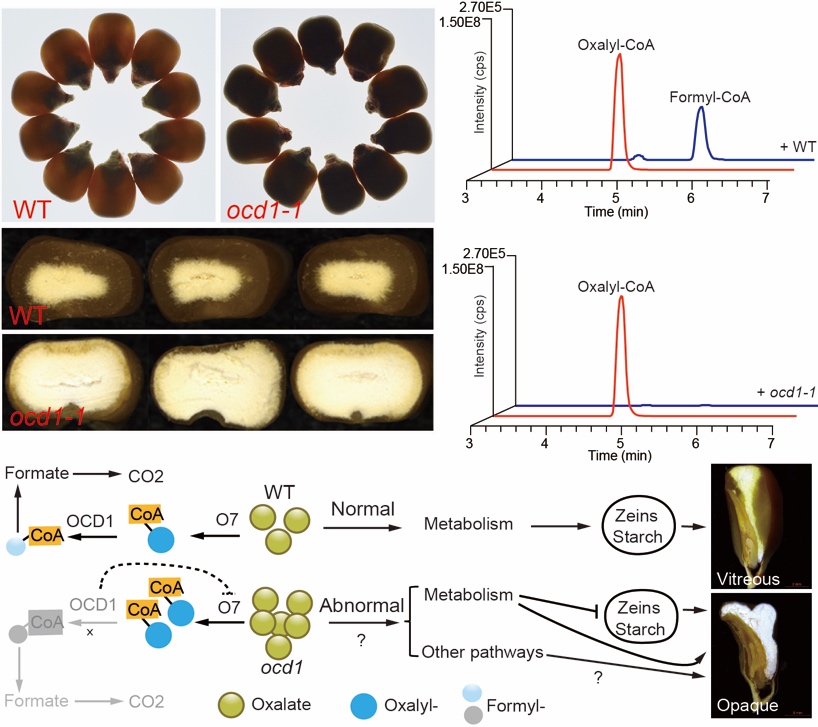
Grain phenotype, enzyme activity verification and mode of action of oxaloyl -CoA decarboxylase mutant


